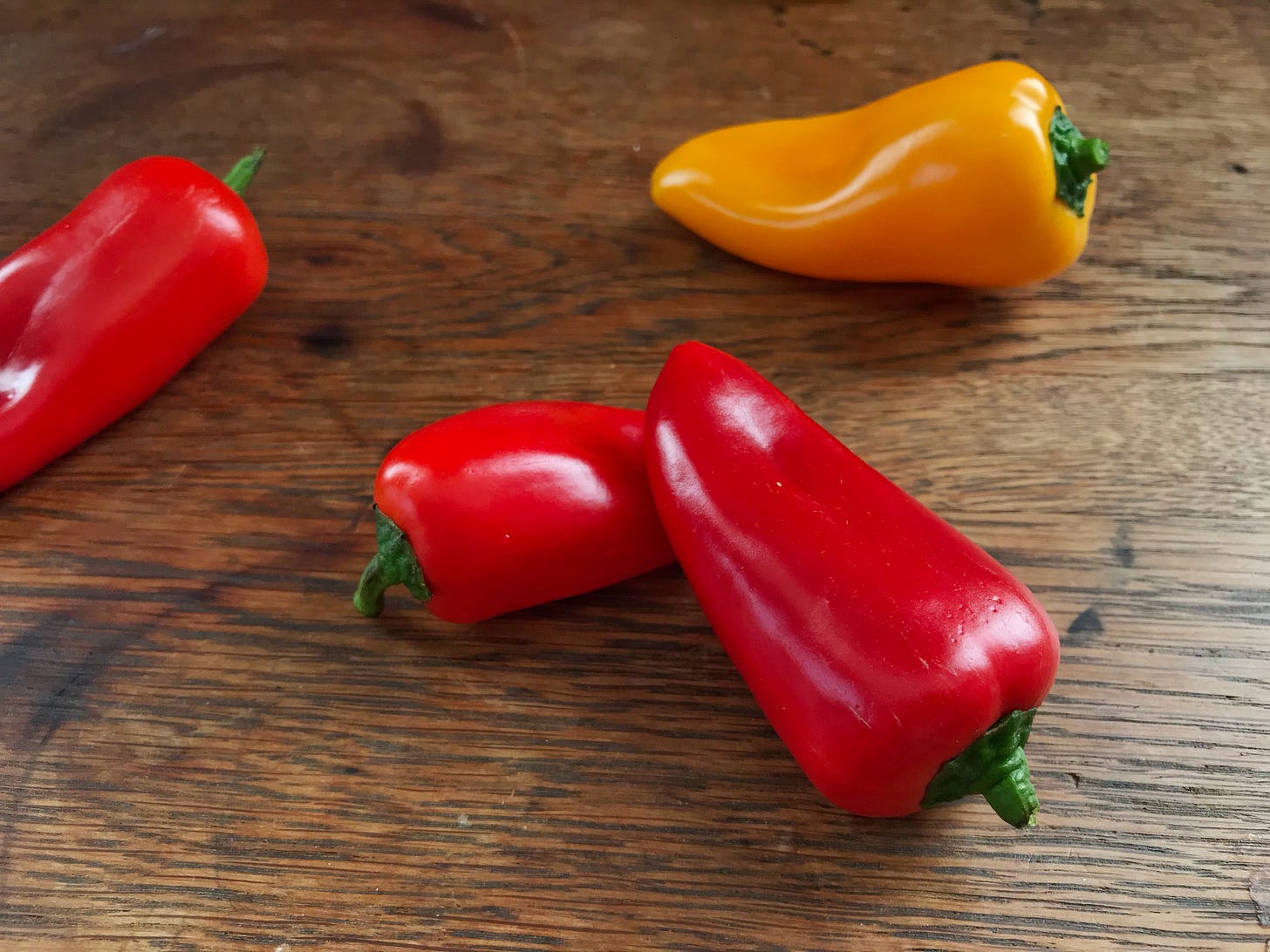Today's color challenge is to mix the reds for a hot red chili pepper. This one is pretty easy if you begin by using the pigment opposites method to darken and dull colors for shadows.
Pigments
Our palette of pigments uses a bright "warm" red, with the pigment, Pyrrole Red or Pyrrole Red Light. You can also use Napthol Red Light. Both of these are good substitutes for Cadmium Red Light but do not use toxic heavy metals in the formula. Often, you'll see a Cadmium Red Light Hue, which also does not use actual cadmium. It usually has the pigments pyrrole or napthol in it.
This bright red is found right on the pepper, coming from the tube color itself. Note: All of the other pigments we use are not found often, if at all, in normal life, and should always be mixed with other pigments, but red is a useful raw pigment since we see it often.
Painting
You can paint a red pepper all over with the red pigment first. This is called painting the object with the local color, just as if you had a little wooden pepper model, and you needed to make it red.
But we're not painting a model, we’re making an image using light and shadow. You'll need to make a darker red for a shadow color and add highlights. There are many variations in the shadows and light areas, but for our purposes today, we'll just do a simple shadow and a simple highlight.
The pigment opposite of the red is the Phthalocyanine Green, or Phthalo Green for short. This green is much stronger than the red, so use a tiny amount at first, experimenting to get a darker burgundy or brick red. Adding the bit of green will make a rich dark red.
To make a highlight color, it's a little bit tricky on a pepper. Often the highlight on a bright red shiny object will be a magenta pink, which seems weird at first. Look closely at the highlight to see how pink it is, and then use magenta and white, adding a touch of bright red only if needed, to make the color you see. Keep in mind that white is very vulnerable so add tiny amounts at first.
If you get too much pigment in with the white, remember that highlights take very little paint, so wipe your brush out and begin with new white. Then add some of the overly pink color you just made and you'll do better keeping it very light.
Insight
Experiment on your palette first. Mixing color is always a process, and you will want to experiment making several attempts with small amounts before you mix up enough to paint with.
Thanks for reading - The world needs happy artists.
Dennas
Our color palette:
(All colors are single pigments with no white added by manufacturers)
light yellow - azo
light red - pyrrole
magenta
dioxizine purple
ultramarine blue
cyan blue
phthalo green
raw sienna
burnt umber
titanium white
Are you an artist or want to be?
Get my latest book free: 9 Art Myths Totally Busted So Artists Can Be Free. (offer at https://homeschoolingart.com/get-dennas-free-book/ ). Also check out the amazing sample lessons in our Connected Curriculum - also free on our website: HTTPS://homeschoolingart.com
If you like these short articles, please share - and come back often. You can also sign up to get the articles delivered right to your in-box by signing up here on Substack.



